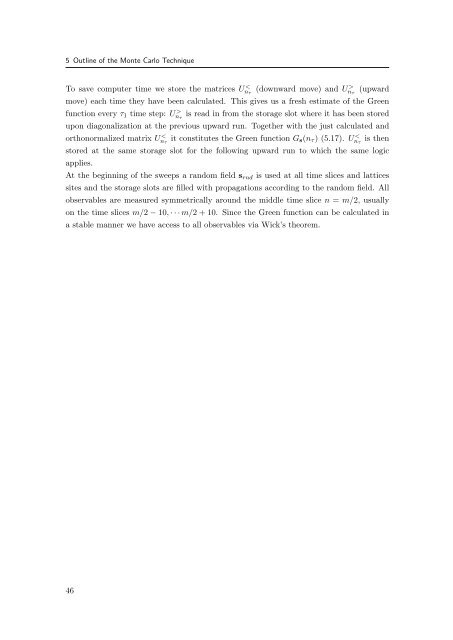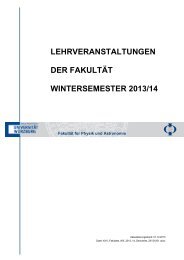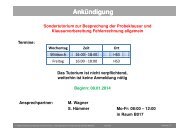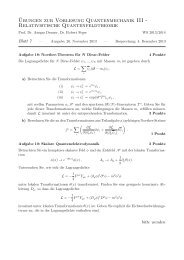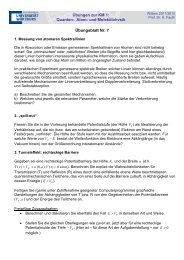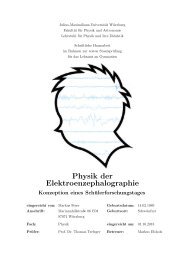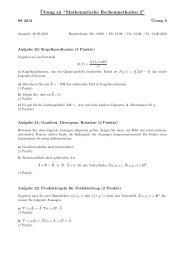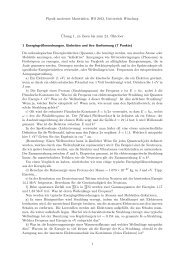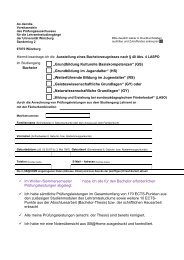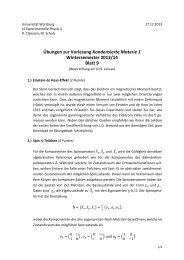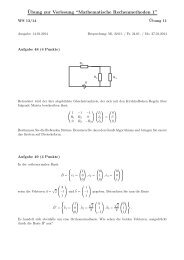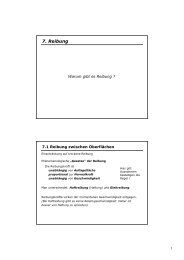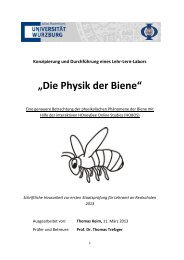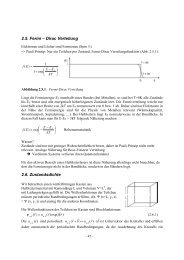Magnetic Field Induced Semimetal-to-Canted-Antiferromagnet ...
Magnetic Field Induced Semimetal-to-Canted-Antiferromagnet ...
Magnetic Field Induced Semimetal-to-Canted-Antiferromagnet ...
Create successful ePaper yourself
Turn your PDF publications into a flip-book with our unique Google optimized e-Paper software.
5 Outline of the Monte Carlo Technique<br />
To save computer time we s<strong>to</strong>re the matrices U < nτ (downward move) and U > nτ (upward<br />
move) each time they have been calculated. This gives us a fresh estimate of the Green<br />
function every τ1 time step: U > nτ is read in from the s<strong>to</strong>rage slot where it has been s<strong>to</strong>red<br />
upon diagonalization at the previous upward run. Together with the just calculated and<br />
orthonormalized matrix U < nτ it constitutes the Green function Gs(nτ ) (5.17). U < nτ<br />
is then<br />
s<strong>to</strong>red at the same s<strong>to</strong>rage slot for the following upward run <strong>to</strong> which the same logic<br />
applies.<br />
At the beginning of the sweeps a random field srnd is used at all time slices and lattices<br />
sites and the s<strong>to</strong>rage slots are filled with propagations according <strong>to</strong> the random field. All<br />
observables are measured symmetrically around the middle time slice n = m/2, usually<br />
on the time slices m/2 − 10, · · · m/2 + 10. Since the Green function can be calculated in<br />
a stable manner we have access <strong>to</strong> all observables via Wick’s theorem.<br />
46


